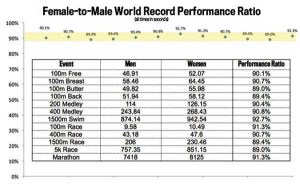IDR Blog
Equality in Armed Forces Comes with All Its Dues: Revisiting the Judgement of Apex Court
Commanding Officers Perspective
The first posting of all newly commissioned officers is to their assigned units. It is for the Commanding Officers (COs) to induct, mould and employ them. Therefore, views of COs carry utmost importance as they indicate an objective appraisal of actual position on ground. Most of the COs find women officers to be highly committed and sincere. They admire them for their enthusiasm despite the environmental difficulties faced by them. Safety of women under their command becomes their primary concern and they find it quite taxing, especially in field areas.
The second common problem faced by them relates to their useful employment. CO of an engineer regiment recounted –
“My unit was in Punjab when a young lady officer was posted to it. Soon thereafter the unit was ordered to move to insurgency affected Poonch area. I did not know how to employ her and where to house her. Ultimately, I had to send her on long leave to tide over the problem.”
Another CO of a services unit said –
“All young officers have to train, exercise and play games with their respective platoons. They are also required to visit troops’ barracks at lights-out to ensure that all mosquito nets are down and even check the cleanliness of latrines. I could not ask or expect the lady officer to do any of these duties”. By turn, every officer is detailed as a duty officer and has to visit the Quarter Guard and all sentry posts at midnight to ensure their alertness. All unit commanders rue the fact that lady officers cannot be assigned any of these duties. Thus the male officers have to undertake additional work load, which they resent.”
Referring to the recent increase in women’s service, some COs pointed out that at 14 years of service a lady officer will be second in command of a unit and will officiate as its commanding officer. In an Engineer or Signal unit she will be an advisor to the Divisional Commander. Without having commanded a platoon or a company and without having attended essential professional courses, it will be unfair to expect her to be able to deliver the goods. Some COs also expressed concern about the physical fitness of women officers and their being highly prone to back problems, pelvic injuries and stress fractures.
Many COs showed reluctance to have women under them due to concern for their safety and dignity. They also tend to be over-cautious in assigning duties to them lest they be exposed to any harm.
Male Colleagues Perspective
Almost all male colleagues admire women officers for their courage and determination. They understand and appreciate challenges faced by them in trying to adapt to an environment which is totally male dominated. However, they want the women officers to do their share of work and duties. They resent preferential treatment given to their women colleague.
One officer was outspoken enough to state –
“They have joined the military on the plank of equality of sexes but this plank vanishes the day they join the training academy”.
Thereafter, they again become the weaker sex needing special dispensations.” An officer recounted that a lady officer posted to an Ordnance Depot declined to carry out periodic stocktaking of stores lying in isolated sheds unless provided with escort for security. Other officers had to do her job.
When told about women making up shortage of male officers, most young officers scoff at the speciousness of the argument. According to them, there is no shortage of male volunteers to join the services but the required number of candidates do not come up to the standards laid down. The services do not want to dilute the standards even marginally in the fear of compromising the quality of intake. But when it comes to women, standards are reduced to extremely low levels.
Soldiers Perspective
One of the arguments of Central Government was that male troops will not accept the command of women on account of their perceived ‘rural background, with prevailing societal norms’. As soon as this argument is made a definite question comes into our mind that “If NirmalaSitharaman could be the defence minister and the three chiefs accepted her, why are we considering that others will not? Why are we even debating it?”On account of the same the Union’s argument would definitely be termed as very regressive and retrograde.
But the fault lies not in the argument but the way it was presented. The real reason why soldiers are reluctant in accepting commands swiftly because for them superiority lies in form of physical prowess as compared to intellect. For a soldier a superior is one who in not only intellectually superior but can actively lead them from front, run and train like them, can beat them in physical standards, can understand and solvetheir problems, can share the same barracks with them.
Most soldiers view women’s induction as a fall-out of Government policies and generally take it lightly. They are convinced that women can never lead them effectively. Some Junior Commissioned Officers were blunt enough to state – “An officer, who cannot run with us, cannot train with us and cannot exercise with us can barely be expected to lead us”[18].
Now this reality we need to accept because of the fact that troops are recruited on the basis of physical standards and not on the basis of any written examination. Moreover entry level recruits in Army are less educated and belong to rural backgrounds as compared to entry level recruits in Air Force and Navy.
The Concept of Equality is not breached as there is Reasonable Classification
It is a universally accepted fact that militaries are not created to generate employment and hence have nothing to do with gender equality. They are tasked to ensure national defence and that is the sole reason for their existence. They need only the fittest – men or women. Armed forces require personnel who are physically strong and mentally robust to be able to handle battle-field pressures. The fighting potential of a force depends fundamentally on its cohesion, mutual trust and faith in the leadership. Nothing should be done to weaken these traits.
Article 14 of the constitution says “The state shall not deny to any person equality before the law and equal protection of laws”.
While Article 14 forbids class legislation but it permits Reasonable Classification of persons for achieving specific ends[19]. The classification must fulfill two conditions:
• It must be found on intelligible differentia which distinguishes persons that are grouped together from others who are left out the group; and
• The differentia must have rational relation to the object sought to be achieved by the act.
• The third point which is a new concept based on guarantee against arbitrariness. Classification should be on the principle of reasonableness[20].
Object sought to be achieved in our case is National Defence, well-being and war potential of Armed Forces. Now let’s see how it satisfies the Principle of Reasonable Classification and Intelligible Differentia.
Scientific Evidence showing Inherent Physical Limitations of Women
The reason for the limitations is pure anatomy. Women are usually born with female sex organs that primarily produce larger amounts of estrogen. Men are usually born with male sex organs that primarily produce larger amounts of testosterone.
While estrogen has been observed to be potentially beneficial in muscle recovery, testosterone is a key ingredient in muscle growth. Testosterone stimulates protein stimulus leading to greater growth. If estrogen outnumbers testosterone your muscle growth is impeded even if they do return to normal strength faster.Men, on average, have 7–8 times more testosterone in their systems than women.
In an article[21], The Journal of Marine Medical Society listed out several physical, psychological and social issues that could be unique to women combatants.
Tossing and turning not only causes women more psychological distress, it also raises their insulin and inflammation levels — risk factors for compromised health, found a 2008 study of 210 people led by Edward Suarez at Duke University.
A study of more than 6,000 participants, led by researchers at the University of Warwick in 2007, found that women who slept five or less hours a night were twice as likely to suffer from hypertension than women who slept for seven or more hours. Among men, there was no such relationship[22].
A study in the Journal of Applied Physiology found that men had an average of 26 lbs. (12 kilograms) more skeletal muscle mass than women. Women also exhibited about 40 percent less upper-body strength and 33 percent less lower-body strength, on average, the study found.
Difference exists in world of sports also
In general, men are also faster than women. The fastest woman in the world, Florence Griffith Joyner, ran the 100-meter dash in just 10.49 seconds in 1988, and that record remains unbroken. Yet her fastest time wouldn’t have even qualified her for the men’s 2016 Olympic competition, which requires competitors to finish the 100-meter sprint in 10.16 seconds or less. Although the difference is only of mini seconds but those who are in this field knows that how much effort it takes.
The Israeli physicist Ira Hammerman spoke at the 2010 Wingate Congress of Exercise & Sports Sciences, and he found that this little-known ratio held across all sports. And yet they all share something: Their women’s speed world records are all about 90 percent of their men’s speed world records, in both short, middle and long distances[23].
If you know sport, you know this beyond a reasonable doubt: there is an average 10-12% performance gap between elite males and elite females. The gap is smaller between elite females and non-elite males, but it’s still insurmountable and that’s ultimately what matters. Translating these statistics into real world results, we see, for example, that:Just in the single year 2017, Olympic, World, and U.S. Champion Tori Bowie’s 100 meters lifetime best of 10.78 was beaten 15,000 times by men and boys.
The same is true of Olympic, World, and U.S. Champion Allyson Felix’s 400 meters lifetime best of 49.26. Just in the single year 2017, men and boys around the world outperformed her more than 15,000 times[24].
Physiological Realities
The natural processes of menstruation and pregnancy make women particularly vulnerable in combat and command situations. Lack of privacy and sanitation can result in an increased incidence of genitourinary infections as is evident from a number of studies. Menstrual hygiene is a major issue, and the need to suppress menstruation in combat zones and its effects on long-term health is debatable. Unforeseen pregnancy is an issue that needs to be prevented and tackled sensitively. The effect of prolonged deployment in difficult terrains and grueling physical activity on the reproductive health of women war veterans is being studied extensively particularly in the United States[25].
Indian Army is mostly deployed in difficult terrain and adverse climate conditions. “These conditions have a major bearing on the employment of women officers in the light of their physiological limitations accentuated by the challenges of “confinement, motherhood and childcare”.
Women normally get commissioned at the age of 23 to 25 years. Soon, thereafter, family pressures start building up on them to get married. Many women confess that managing married life with military service is difficult, though marrying a service officer helps. Subsequent pregnancy and motherhood prove very demanding.





